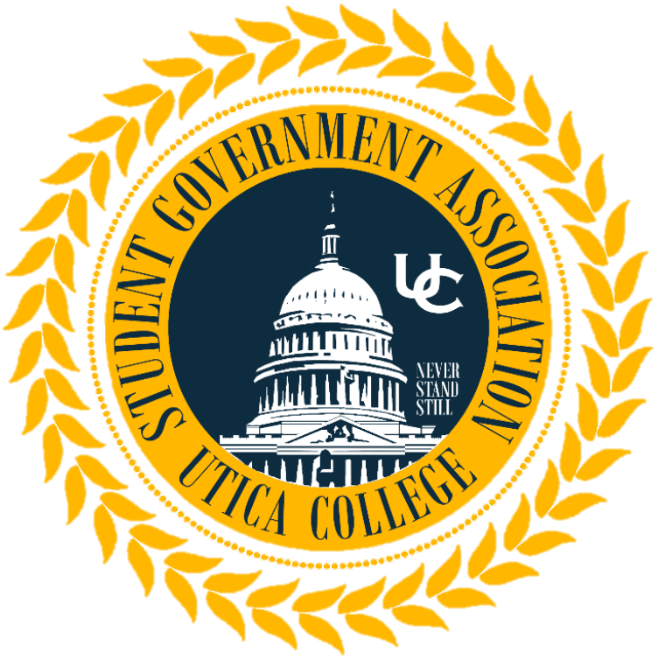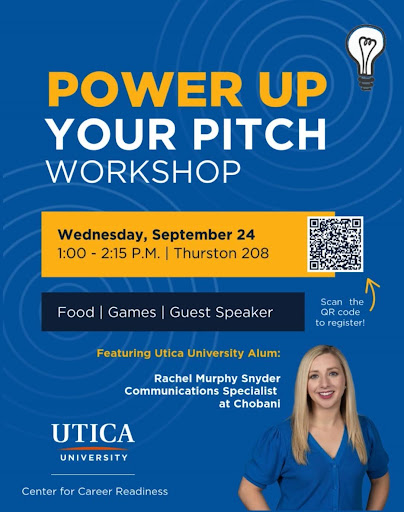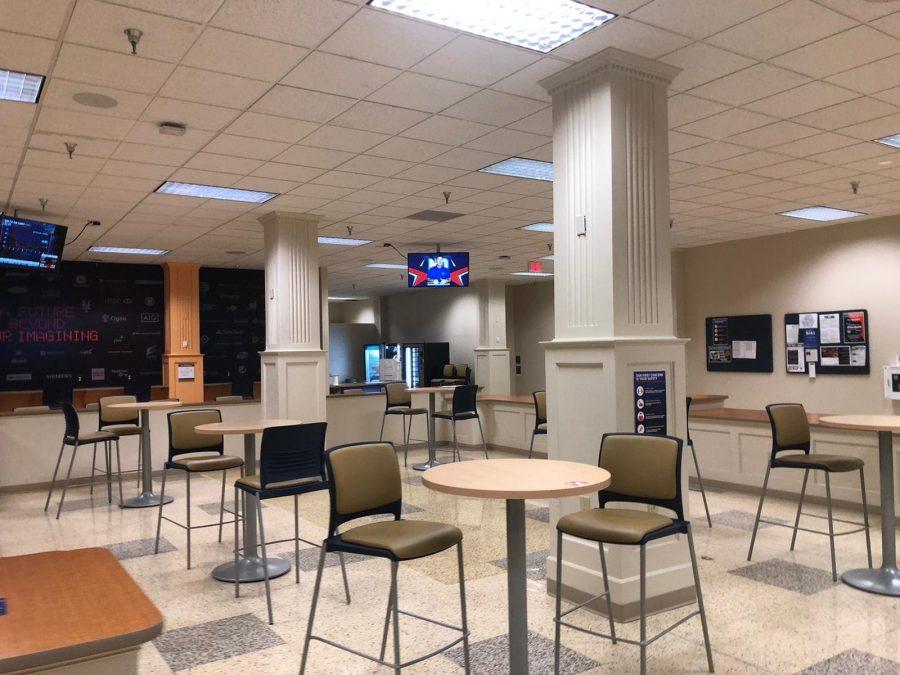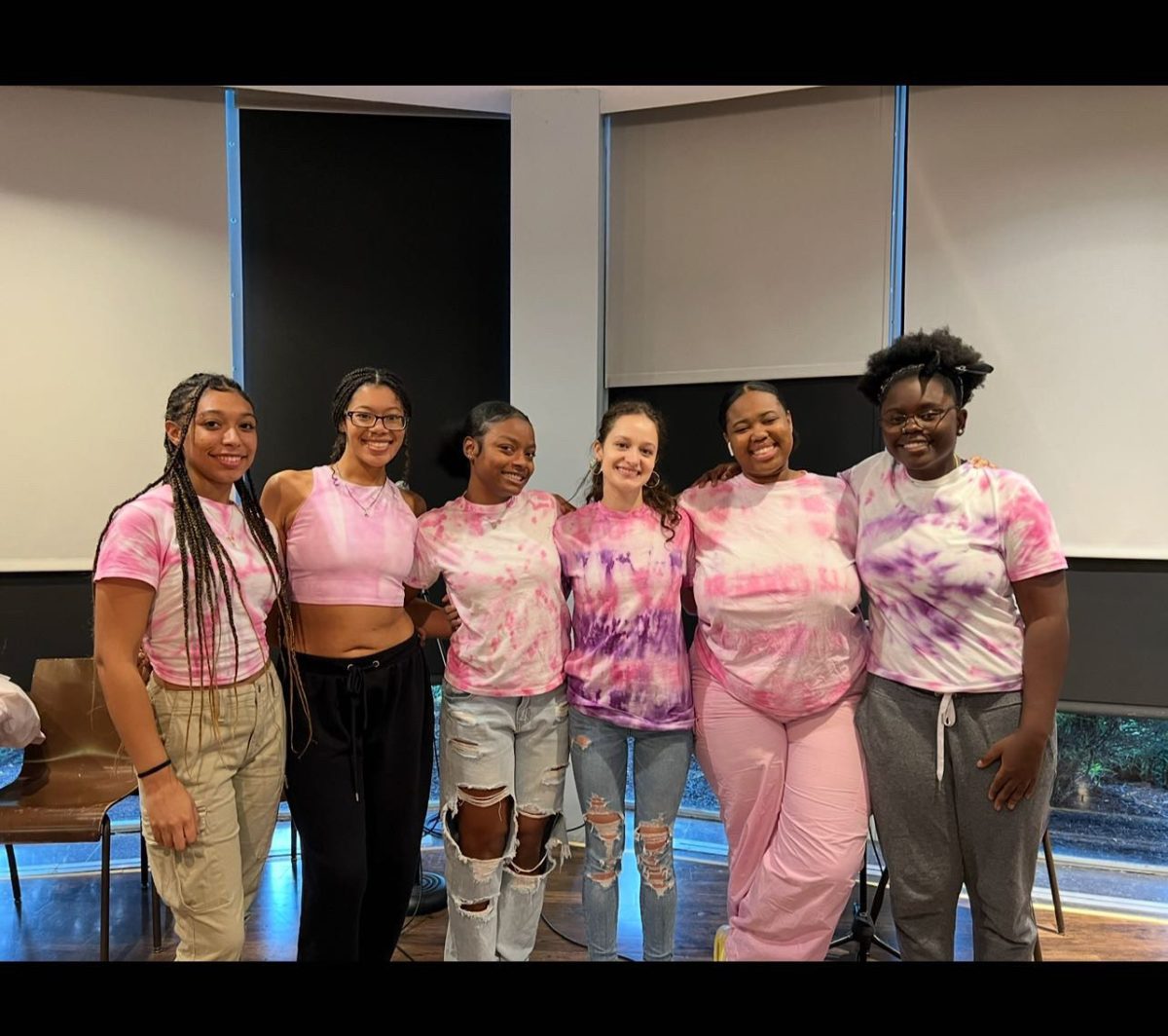The downtown business school has previously been crowded with students drinking coffee, chatting to one another and socializing between and after classes. But this semester, things are different and there are new regulations affecting both staff and students.
According to Associate Professor of Economics Rick Fenner, the most obvious change has been the most challenging.
“Maybe masks shouldn’t be a big deal, but they are,” Fenner said. “Masks are not very comfortable, but it also is difficult to hear students when they are talking or asking questions. Plus, I am finding it harder to learn student’s names.”
The regulations at the Clark City Center campus are much of the same as those on the Burrstone campus, said Stephanie Nesbitt, dean of the School of Business and Justice Studies.
Social distancing and masks are required in all public areas. Classrooms have been reduced to 50% capacity and every effort has been made to ensure students are socially distanced in the classes.
The large auditorium and the unfinished classroom on the fifth floor have been turned into larger classrooms to help assist scheduling needs and all classrooms can now support hybrid teaching.
“Where Clark City Center differs a little is our access,” Nestbitt said. “We no longer allow anyone to enter through the main doors on Genesee Street. Everyone enters from the back of the building or the side doors facing Genesee Street.”
Junior Alec Pease said this change is to control access to the building and have everyone’s COVID-19 Health Screening checked, as well as have temperatures taken before entering and attending classes.
The downtown campus is significantly quieter and emptier this semester as well.
Pease said the lobby where students used to hang out, talk and study is now far more set on just attending classes and leaving.
Fenner reiterates this, saying that the lounge area where students used to spend time before and after classes is now empty.
“Just about everyone comes in, takes their classes and leaves. And I admit, I don’t spend nearly as much time downtown in my office as I would like to,” Fenner said.
Nesbitt said the downtown campus is quieter like the Burrstone campus, crediting the reason to the pandemic and the fact that large gatherings are prohibited and social distancing is required.
In terms of a return to the “norm,” most are becoming more aware that the coming spring semester is going to look much like this one does.
“This has meant that many of the academic and social activities we associate with our college campus have been postponed, canceled or moved into virtual space,” Nesbitt adds. “All of this helps us reduce or prevent the transmission of the virus and keeps our campus safer and healthier in the long run.”
Pease predicts that the return to normalcy may take well over six months, and that classes won’t be fully on ground any time soon.
“Quite honestly, I believe it will be next fall before we get back to ‘normal,’” Fenner said. “We will need a safe effective vaccine to be developed, enough time to produce and deliver massive quantities of it. I don’t believe all of that can be accomplished before the summer at the earliest. I hope I am wrong, but I would be very surprised.”
Fenner proceeded with the idea that once an effective vaccine is developed, he believes that people will jump at the chance to be social again, to hug and shake hands and just be around other people.
Nesbitt said the Clark City Center Campus will return to normal when everything else does, also predicting that that won’t happen until after the spring of 2021.
Prior to joining Utica College, Nesbitt spent 18 years as a risk manager. Her team dealt with emergency response and preparedness for pandemic response.
“We need to have a safe and effective vaccine in order to even begin thinking about a return to normal,” Nesbitt said. “Experts are hopeful we will have a vaccine before the year ends or early next year.”
She adds that to get back to something close to normal, about 60-70% of people need to be vaccinated, which could take up to six months post-development of an effective vaccine.
In the meantime, Nesbitt said to stay patient, social distance and wear a mask.
There are also changes to the downtown campus that have nothing to do with COVID-19.
The area around Clark City Center is booming.
“The downtown community is growing and is turning into a vibrant area,” Nesbitt said. “It is a very exciting time to be downtown. When the world does return to normal, our business school is going to be right in the center of it all.”






































































































































